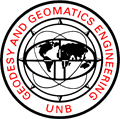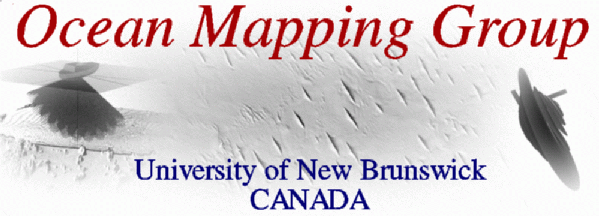Introduction to the Ocean Mapping Group
The Ocean Mapping Group was established at the University of New Brunswick in 1988 in response to a national need to develop advanced ocean mapping capabilities. The research of the Ocean Mapping Group is focused on developing new and innovative techniques and tools for the management, processing, visualization and interpretation of ocean mapping data. While we define ocean mapping in its broadest sense (including the water column, sea surface and sea bottom), the initial efforts were directed to seafloor mapping, and in particular, towards problems associated with high-volume seafloor bathymetric and imaging systems.
The Chair in Ocean Mapping works within the Ocean Mapping
Group which is part of the Department
of Geodesy and Geomatics Engineering at UNB. It draws upon
faculty and staff with expertise in the fields of hydrography, geographical
information systems, digital image analysis, interactive computer graphics
and 3-D data visualization. The Chair provides research direction, support
staff and infrastructure to support research within the group.
The Chair was originally setup as an NSERC Industrial Research Chair. The research the Chair undertakes is now fully funded by external sponsor organisations, Canadian and International , Commercial and government. Active sponsors have access to all current research results developed with Chair funding (at source code level) and are free to call upon chair personnel to provide informal advice on operational survey issues. New focused research directions are actively pursued based on current sponsorship suggestions. Chair researchers have also been successful in attracting funding from other research agencies, such as for example, Department of Fisheries and Oceans and Geological Survey of Canada.
Current projects and research directions
of the Ocean Mapping Group are many and varied. The research covers
a breadth of topics from, "Acoustic imaging in support of salmonid
mariculture site assessment and nautical charting surveys" to "Development
and testing of improved field techniques and software for fine-scale monitoring
of the seabed".
The Ocean Mapping Group organizes and gives an internationally
recognized industry Multibeam Course.
The courses are held four times a year around the globe. The
course student body is typically 40 to 50 students per course to meet the
continued growth in demand for the Multibeam Course. The latest research
within the Ocean Mapping Group are used to update course material
to ensure that it keeps up with the latest trends in swath sonar surveying.
As part of the Geodesy and Geomatics Engineering department the Ocean Mapping Group enables the student body to benefit from the research activities the group is pursuing. A series of courses are provided that pass on both first principles and latest research results to the undergraduate and graduate body.
For more information contact John E. Hughes Clarke (jhc@omg.unb.ca) Last modified March 13 2012 by J.Muggah



